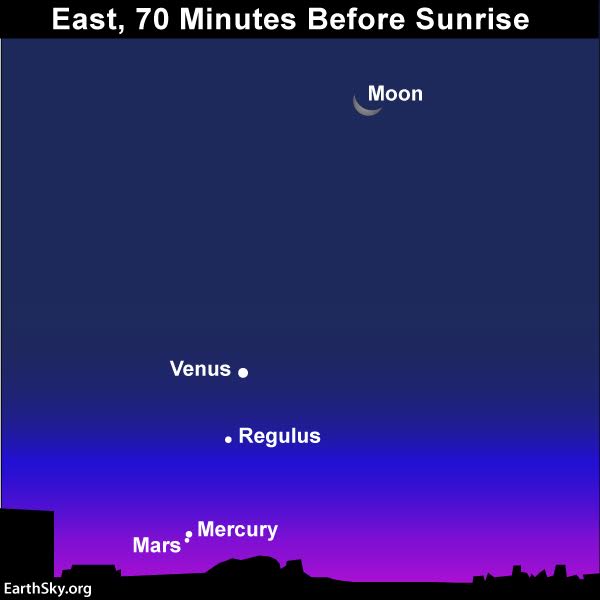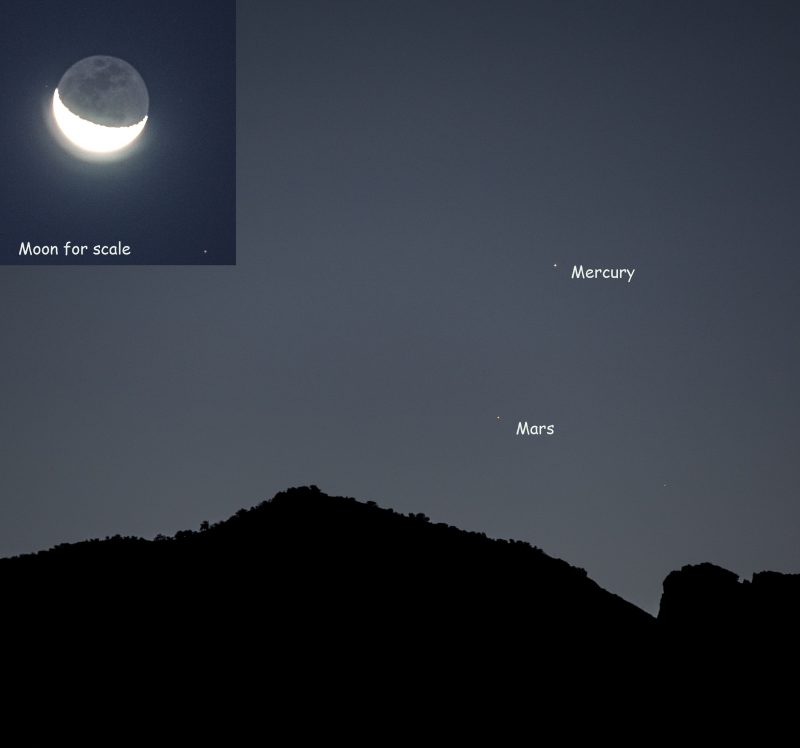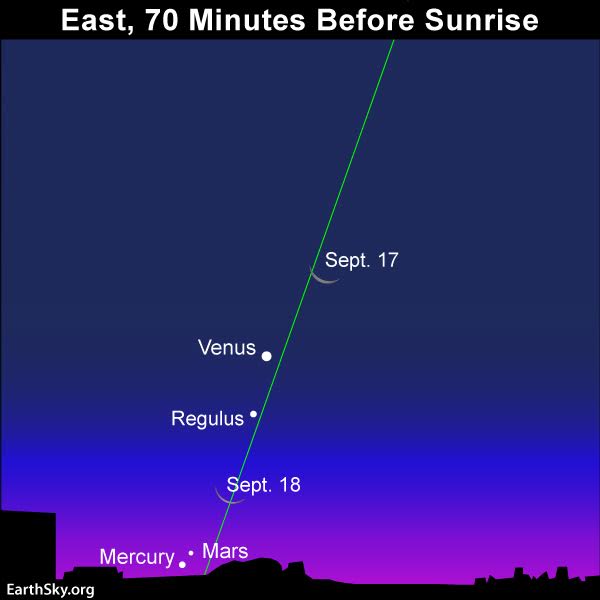
Want to see the super-close conjunction of the planets Mercury and Mars before sunrise on September 16, 2017? If you live in the Northern Hemisphere, you have a good chance of seeing the close-knit planetary twosome tomorrow morning. Get up at least 90 minutes before sunrise and look eastward (in the direction of sunrise). If it’s at all clear, you simply can’t miss the waning crescent moon and the dazzling planet Venus, the brightest and second-brightest celestial bodies, respectively, in the predawn sky. The moon and Venus help guide you to Mercury and Mars.

As darkness starts to give way to dawn, look for Mercury and Mars near the horizon, more or less on line with the moon and Venus. Given a level and unobstructed eastern horizon, you might see the two embracing worlds climbing into the sky 80 or so minutes before sunrise. Binoculars could come in handy!
The Northern Hemisphere has the big advantage. At mid-northern latitudes, Mercury and Mars rise around 90 minutes before the sun; but at temperate latitudes in the Southern Hemisphere, these two worlds only rise about 45 minutes before sunrise. But no matter where you live worldwide, an imaginary line from the moon through Venus points in the general direction of Mercury and Mars. Click here for recomended almanacs; they can help you find out the rising times of these planets in your sky.

Be mindful that the modestly-bright star a short hop below Venus is not Mercury or Mars. That’s Regulus, the brightest star in the constellation Leo the Lion. Although considered a 1st-magnitude star, Regulus pales next to Venus, which outshines Regulus by a solid hundredfold. If you can still see Regulus in the encroaching morning twilight, you can draw an imaginary line from Venus through Regulus to find Mercury and Mars’s spot near the horizon.
If you only see one starlike point of light, it’ll probably be Mercury. Mercury is quite bright, shining a good ten times more brilliantly than the rather faint planet Mars. In fact, you may need to aim binoculars (or a low-powered telescope) at Mercury to spot Mars taking stage with Mercury in the same binocular (or telescopic) field of view.
At conjunction, Mercury and Mars will only be 0.06o apart – the equivalent of about 1/8th the moon’s apparent diameter. The conjunction on September 16, 2017 features the closest conjunction of two planets since January 1, 2017. Also, a closer planetary conjunction won’t happen again until December 7, 2018. So enjoy the grand pairing of Mercury and Mars while the time is at hand.
Keep an eye on the morning sky after tomorrow’s planetary conjunction. Watch for Venus to sink downward day by day, toward Regulus and Mars. And watch for Mars to climb upward day by day, away from Mercury and toward Venus. Venus will pair up with Regulus on September 19, 2017, and then Mars will couple up with Venus on October 5, 2017.

Bottom line: No matter where you live worldwide, an imaginary line from the moon through brilliant Venus – in the east before dawn – points in the general direction of Mercury and Mars on September 16, 2017.











